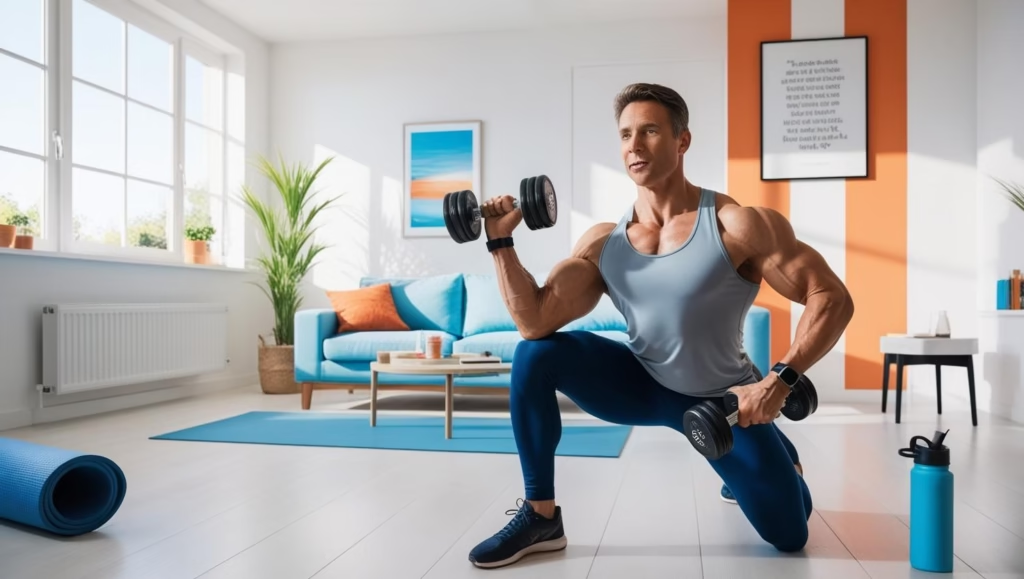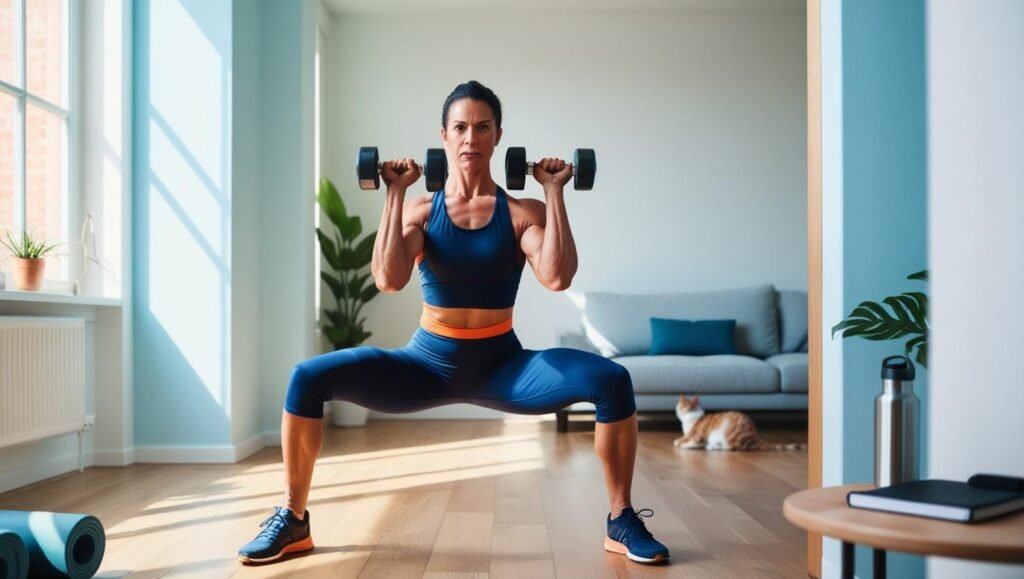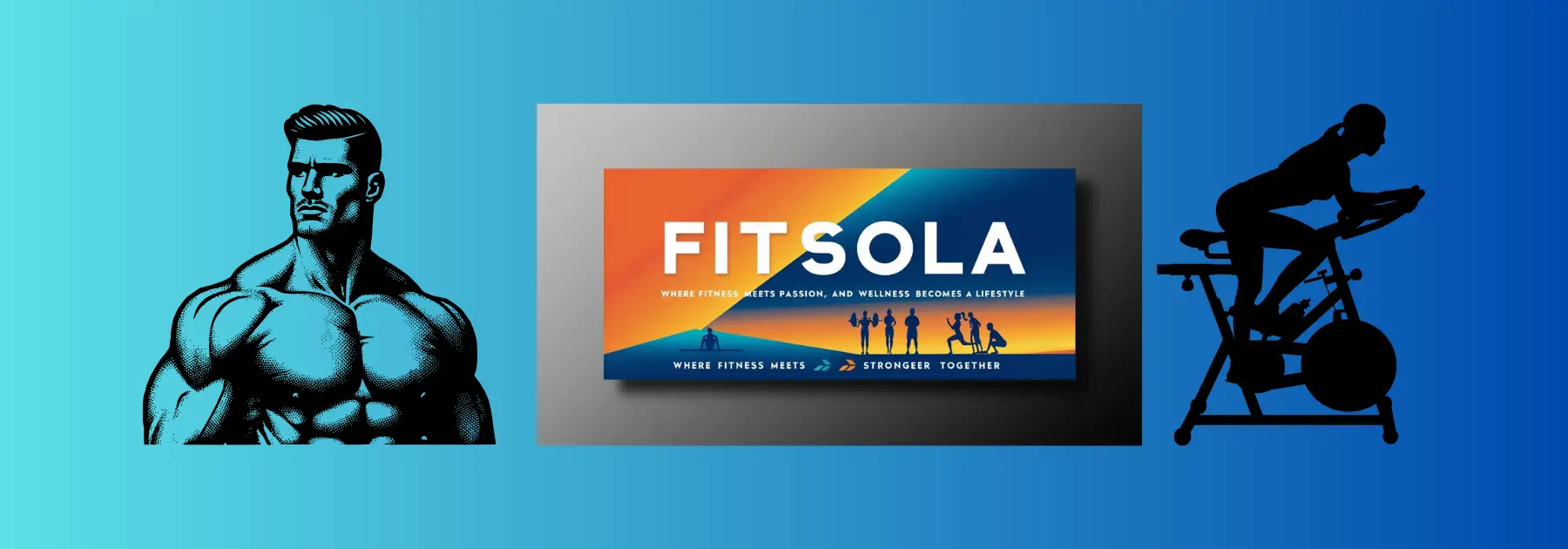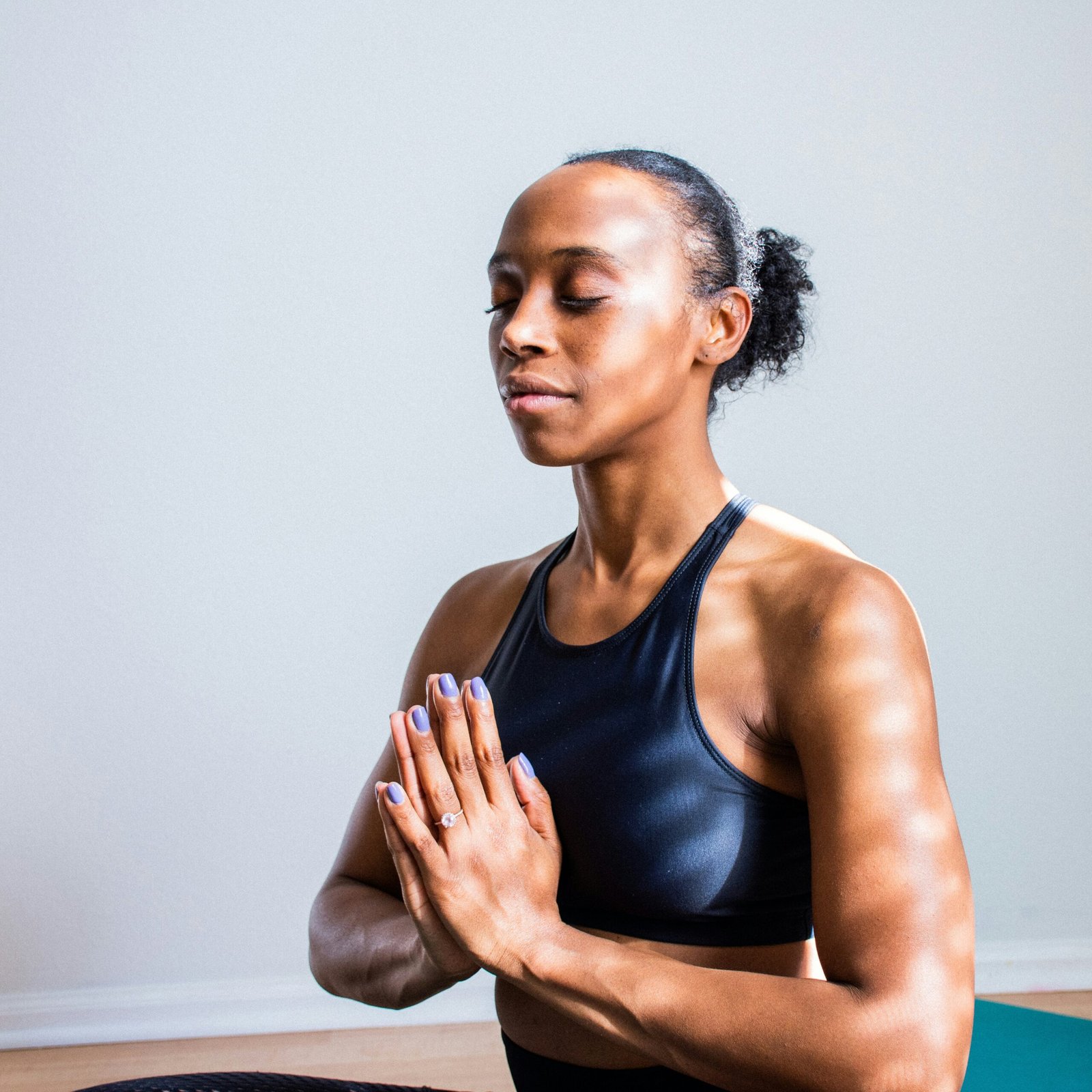Introduction
Picture this: You finish a long day of work, glance at the clock, and realize the gym is already closed. Or maybe you’ve never felt comfortable in crowded fitness studios, surrounded by clanging weights and intimidating machines. What if your living room, the same space where you binge Netflix and sip morning coffee, could transform into your personal fitness sanctuary? Home workouts offer a convenient alternative, allowing you to exercise anytime without leaving your house
Welcome to the era of home workouts, where convenience meets results. Gone are the days when achieving your fitness goals required expensive memberships, long commutes, or even pants with a waistband. Today, thanks to innovative solutions, home workouts have revolutionized fitness. Whether you’re a busy parent, a remote worker, or someone who simply craves privacy, home workouts now offer a flexible, cost-effective, and surprisingly powerful way to build strength, boost endurance, and reclaim your health, all within arm’s reach of your couch.
In this guide, you’ll discover:
– Time-efficient routines for every fitness level (no equipment required!).
– Budget-friendly gear to amplify your workouts (think: $15 resistance bands, not $2,000 treadmills).
– Pro tips to stay motivated, avoid plateaus, and turn your space into a productivity powerhouse.
– The latest tech (AI trainers, VR fitness!) that brings the gym experience to your doorstep.

In this guide, you’ll discover:
- Time-efficient routines for every fitness level (no equipment required!).
- Budget-friendly gear to amplify your workouts (think: $15 resistance bands, not $2,000 treadmills).
- Pro tips to stay motivated, avoid plateaus, and turn your space into a productivity powerhouse.
- The latest tech (AI trainers, VR fitness!) that brings the gym experience to your doorstep.
Say goodbye to excuses and hello to a stronger, healthier you, one living room burpee at a time. Let’s dive in and redefine what it means to “go to the gym
The Rise of Home Workouts
Exercising at home has become increasingly popular, not just as a temporary fix but as a long-term fitness solution. Events like the global pandemic have accelerated this trend, forcing many to adapt their fitness regimes out of necessity. Lifestyle changes, such as working from home, have made it easier to stay active without needing a gym membership. The convenience of rolling out a yoga mat and getting started whenever suits you best is a game-changer.
Why Home Workouts? The Benefits Beyond Convenience
Home workouts aren’t just a trend; they’re a lifestyle shift. Here’s why they’re worth it:
- Flexibility: Exercise anytime—no operating hours!
- Cost-Effective: Ditch pricey memberships.
- Privacy: No gymtimidation here—perfect for beginners.
- Customizable: Tailor workouts to your goals, whether it’s weight loss, muscle gain, or stress relief.
A 2023 study found that 65% of people who switched to home workouts reported better consistency. Ready to join them?
Benefits of Home Workouts
Home workouts offer several perks:
- Convenience: Exercise when it’s convenient, without a commute or specific schedule.
- Cost-effectiveness: Eliminate gym memberships and expensive equipment purchases.
- Flexibility: Tailor workouts to your preferences and adjust the routine as required.
Home workouts save time, money, and offer the freedom to design a personalized fitness approach.
Setting Realistic Fitness Goals
When it comes to home workouts, ambition is fantastic—but setting unrealistic goals is a fast track to burnout. The secret to lasting progress? Realistic, achievable targets tailored to your lifestyle. Start by asking yourself: What’s your “why”? Whether it’s improving energy levels, building strength, or reducing stress, align your goals with what truly matters to you. Break big aspirations into bite-sized milestones, like aiming for three 20-minute workouts a week instead of vowing to exercise daily. Use the SMART framework—Specific, Measurable, Attainable, Relevant, Time-bound—to create clarity. For example, “I’ll master 10 push-ups in 4 weeks” is more actionable than “I want to get stronger.
Tracking progress is key to staying motivated. Use a journal or fitness app to celebrate small wins, like nailing your first unassisted pull-up or completing a full week of workouts. Remember, fitness isn’t linear—life’s chaos means some days you’ll crush it, and others you’ll adjust. That’s okay! Tweak goals guilt-free if your schedule tightens or you need recovery time. Avoid comparing your journey to social media influencers; your living room routine is about your growth, not someone else’s highlight reel. By balancing challenge with self-compassion, you’ll build habits that outlast fleeting motivation. After all, the best fitness goal isn’t the one that looks impressive—it’s the one you’ll consistently follow through on, day after.
Creating a Dedicated Workout Space
Choosing the Right Area
Find a spot in your home where you can move comfortably—space wise and mentally. This might be your living room or a section of your bedroom. Privacy is important, too; ensure you can exercise without interruptions, which can help keep your mind focused.
Essential Home Workout Equipment for Beginners: From Zero to Hero
You don’t need a basement full of gear to get started. Here’s a tiered approach:
- Bodyweight Basics: Push-ups, squats, and planks require nothing but you.
- Budget-Friendly Add-Ons: Resistance bands (10–10–20) and yoga mats add versatility.
- Upgrade Options: Adjustable dumbbells or kettlebells for strength training.
- Yoga mats for comfort during floor exercises
- Resistance bands for added tension and muscle work
- Dumbbells or kettlebells that come at various price points

Start with equipment that fits your budget, and grow your collection as you progress.
Pro Tip: Use water bottles as weights or a towel as a slider for lunges!
Organizing Your Workout Zone
A clean and inviting space helps keep motivation high. Use storage solutions like baskets or shelving to keep your workout area tidy. Adding some motivational decor, like bright colors or motivational quotes, can create a positive atmosphere.
Designing an Effective Workout Routine
Understanding Different Types of Exercises
A balanced workout routine should include:
- Cardiovascular exercises: Boosts your heart rate and burns calories (e.g., jumping jacks, running in place).
- Strength training: Builds muscle and improves endurance (e.g., push-ups, squats).
- Flexibility exercises: Enhances range of motion and prevents injuries (e.g., yoga, stretching).
Sample Workout Routines
Beginner Workout Routine:
- 10-minute warm-up
- 10 squats
- 10 push-ups
- 30 seconds plank
- 5-minute cool-down stretch
Intermediate Routine:
- 15-minute jog in place or jump rope
- 15 squats with resistance band
- 15 push-ups
- 1-minute plank hold
- 10-minute stretch/yoga session
Advanced Routine:
- 20-minute cardio session
- 20 weighted lunges
- 20 burpees
- 2-minute plank with leg lift variations
- Comprehensive cool-down with flexibility exercises
Top Home Workout Exercises for Every Fitness Level
Strength:
- Push-Ups: Targets chest, shoulders, triceps. Modify with knees or incline.
- Glute Bridges: Activates posterior chain—perfect for desk warriors.
Cardio:
- Burpees: Full-body burn. Skip the jump if you’re a beginner.
- High Knees: Crank up your heart rate in 30-second bursts.
Flexibility:
- Downward Dog: Stretches hamstrings and shoulders.
- Child’s Pose: Relieves lower back tension.
Adapting Workouts to Personal Needs
Customize your workout depending on your specific goals. Want to lose weight? Focus on higher-intensity cardiovascular exercises. Aiming for muscle gain? Incorporate more resistance training. Adjusting repetitions and intensity can cater to any fitness goal.
Staying Motivated: Tips to Keep the Fire Burning
- Setting a Regular Schedule
Consistency is key. Fit your workout into your schedule just like any other appointment. Early morning, lunch breaks, or post-work evenings—all it takes is commitment to a set time each day.
- Tracking Progress and Celebrating Milestones
Keep a fitness journal or use an app to track your workouts and progress. Celebrate reaching milestones, whether that’s achieving a new personal best or maintaining a streak of daily workouts—each is an accomplishment worth noting.
- Overcoming Common Barriers
Distractions and lack of motivation are common hurdles. Keep distractions at bay by exercising at a time of day you’re typically less busy. If motivation wanes, remind yourself why you started and the benefits you’re after.
Utilizing Online Resources and Communities
- Finding the Right Online Workouts
The internet is a treasure trove of workouts, from YouTube channels to fitness blogs. Choosing reputable sources ensures quality guidance. Platforms like Fitness Blender or HASfit offer free and diverse workout options.
- Joining Virtual Fitness Communities
Online fitness communities offer support and accountability. Joining forums or groups dedicated to home workouts allows you to share experiences and encourage one another.
- Leveraging Fitness Apps for Guidance and Tracking
Apps like MyFitnessPal or Strong offer workout tracking, structured plans, and community support. They help in setting goals and provide feedback on your workouts.
Conclusion
Home workouts are practical, accessible, and incredibly rewarding. They offer a flexible route to maintaining fitness by leveraging your own space and schedule.
Ready to transform your living room into a personal fitness studio? Start today! Small steps lead to big changes, and home workouts are your perfect partner in that journey.
FAQs
Do I need expensive equipment to start home workouts? No, you can effectively begin with just your body weight and gradually add affordable equipment as needed.
How can I ensure my workout form is correct at home?Utilize online videos, apps, or consult a virtual trainer to learn proper form and prevent injuries.
What if I have limited space at home?You can perform many exercises in a small area using minimal equipment, focusing on bodyweight exercises or resistance bands.




[…] Effective home workouts (no equipment needed!) […]
[…] Incorporating Family into Workouts […]
[…] The Full Body Workout: Engaging Every Muscle Group […]